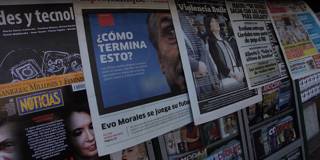Although evidence of the deficiencies in the International Monetary Fund's standard approach has been piling up for years, old habits evidently die hard. But now that Argentina is once again in trouble under the IMF's watch, the need for institutional self-reflection can no longer be ignored.
SYDNEY – Argentina’s politically intractable foreign-debt crisis serves as a powerful reminder that the International Monetary Fund still has no answer for dealing with the volatility of international capital flows to emerging economies. It also underscores the need for reform at the Fund itself.
Given that debt defaults have littered Argentina’s history, we need to go back at least two decades to understand the current situation. For most of the 1990s, Argentina had successfully implemented a fixed exchange rate, which the IMF saw as a sensible option for containing inflation. The approach proved so successful that Argentina attracted substantial international capital inflows, allowing it to fund a large external deficit.
But by 1998, the exchange rate was looking overvalued in the context of adverse terms of trade, a strong US dollar, and capital-flow crises in Asia and Russia. It seemed that some flexibility should be added to the exchange-rate regime, but it wasn’t clear how to do it. Departing from a fixed rate is always a traumatic experience, with obvious winners and losers.

SYDNEY – Argentina’s politically intractable foreign-debt crisis serves as a powerful reminder that the International Monetary Fund still has no answer for dealing with the volatility of international capital flows to emerging economies. It also underscores the need for reform at the Fund itself.
Given that debt defaults have littered Argentina’s history, we need to go back at least two decades to understand the current situation. For most of the 1990s, Argentina had successfully implemented a fixed exchange rate, which the IMF saw as a sensible option for containing inflation. The approach proved so successful that Argentina attracted substantial international capital inflows, allowing it to fund a large external deficit.
But by 1998, the exchange rate was looking overvalued in the context of adverse terms of trade, a strong US dollar, and capital-flow crises in Asia and Russia. It seemed that some flexibility should be added to the exchange-rate regime, but it wasn’t clear how to do it. Departing from a fixed rate is always a traumatic experience, with obvious winners and losers.